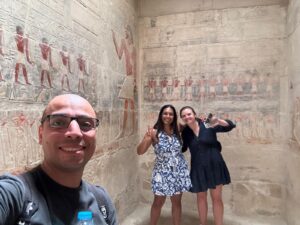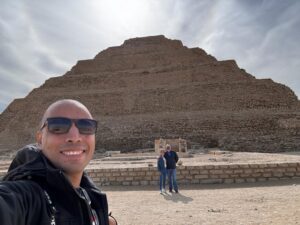
The Egyptian Pyramids represent an enduring symbol of ancient civilization, engineering prowess, and the intricate beliefs surrounding the afterlife. These pyramid-shaped monuments, primarily constructed as funerary tombs and ceremonial complexes for the departed pharaohs, are emblematic of Egypt's rich cultural and historical heritage. Spanning various periods of ancient Egyptian history, from the Old Kingdom (2575 BC to 2150 BC) to the Middle Kingdom (2050-1550 BC) and beyond, these architectural marvels continue to captivate and intrigue people worldwide.

To date, approximately 118 pyramids of various definitions have been discovered across Egypt, although some sources cit

e a slightly higher number, around 138. These pyramids are predominantly situated on the west bank of the River Nile, strategically placed to symbolize the journey of the deceased into the afterlife. Grouped into several clusters or pyramid fields, they serve as a testament to the meticulous planning and ingenuity of ancient Egyptian architects and laborers.
The construction of pyramids evolved from earlier structures known as mastabas, which were mudbrick bench-like tombs built during the Early Dynastic Period. Mastabas featured rectangular funerary chambers with inward sloping sides, often containing burial chambers and serdabs for storing precious items and offerings. Over time, these mastabas evolved into more elaborate structures, culminating in the iconic pyramid form.
The Step Pyramid of Djoser, also known as the Pyramid of Djoser, stands as the earliest known pyramid-like structure in Egypt. Built during the 3rd Dynasty of the Old Kingdom, it marked a significant advancement in architectural innovation. Initially, it began as a square mastaba-like structure but was later developed into a six-stepped monument with an underground labyrinth of chambers and galleries. Serving as the funerary tomb of Pharaoh Djoser, the Step Pyramid complex aimed to ensure his eternal rebirth and facilitate a successful afterlife journey.
[caption align="alignright" width="300"]
Subsequent pyramid constructions further refined the architectural techniques and grandeur of these monumental structures. The Bent Pyramid, constructed by Pharaoh Sneferu at the Dahshur necropolis, showcases a unique architectural feature with its distinctively angled profile. This deviation from the traditional pyramid shape has sparked scholarly debate, with theories suggesting structural instability or design modifications during construction.
The Great Pyramid of Giza, also known as the Pyramid of Khufu, stands as the crowning achievement of ancient Egyptian pyramid construction. Built by Pharaoh Khufu, it remains one of the most iconic and enduring symbols of Egypt's ancient civilization. Surrounded by mystery and speculation, the Great Pyramid's sheer scale and precision engineering continue to inspire awe and wonder.
Each pyramid complex served as more than just a tomb for the pharaoh. They were elaborate ceremonial centers, housing mortuary temples, causeways, satellite pyramids, and other structures dedicated to the pharaoh's eternal legacy. These complexes were meticulously planned and constructed to ensure the pharaoh's safe passage into the afterlife and their continued divine rule in the realm of the gods.
Beyond the renowned pyramids of Giza, numerous other pyramids dot the Egyptian landscape, each with its own story and significance. From the enigmatic Pyramid of Meidum to the lesser-known pyramids of the Middle and New Kingdoms, these structures provide invaluable insights into ancient Egyptian beliefs, society, and technological achievements.
The legacy of the Egyptian pyramids endures as a testament to humanity's enduring quest for immortality and spiritual transcendence. As timeless symbols of power, prestige, and divine kingship, they continue to inspire wonder and fascination, inviting us to delve deeper into the mysteries of Egypt's ancient past.

